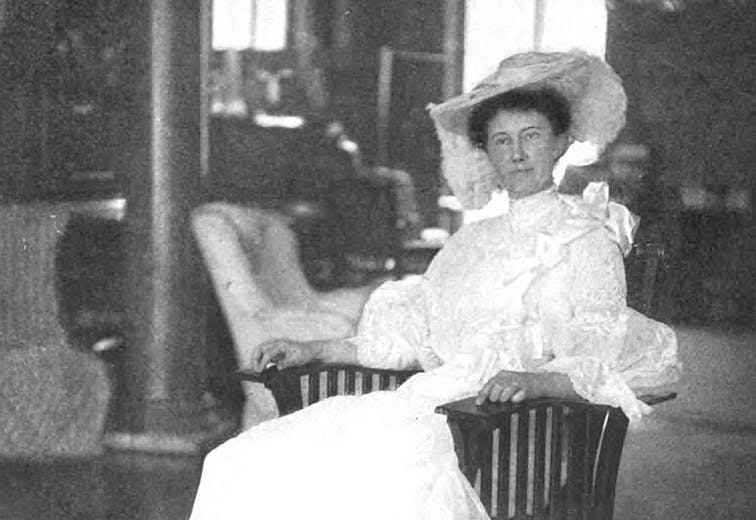Poem of the Day: ‘How To Tell the Wild Animals’
Carolyn Wells earned a living writing mystery novels, but her poems are always clever and often fun, well metered and well rhymed, whimsical and attention grabbing — most everything, in other words, that one could want for light verse.

Carolyn Wells (1862–1942) began writing light verse, especially for children, in an era in which many others were doing the same thing. The market was vast, with The New York Sun and nearly all other daily newspapers regularly featuring poetry. But that large market would bring out endless numbers of writers, and with such competition, Wells felt that her work was not receiving much attention — despite her marriage to Hadwin Houghton, heir of the Houghton-Mifflin publishing firm.
In 1897, however, she came across a mystery by Anna Katharine Green (1846–1935), the author of the first successful American detective novel, “The Leavenworth Case” (1878). And like better writers after her — and worse writers, too — she decided that mysteries were the way readers were going. By the time of her death, Wells had published 61 novels about her detective, Fleming Stone.
Her first Stone tale, “The Clue,” is sometimes found on lists of important mysteries, but if it is actually important, that has more to do with the history of the genre than the literary merits of the book. As a mystery writer, Carolyn Wells has faded into the shadows of the unread.
What hasn’t faded, however, or at least shouldn’t fade, is the light verse she set on the back burner while pounding out her detective stories. These poems are always clever and often fun, well metered and well rhymed, whimsical and attention grabbing — most everything, in other words, that one could want for light verse. “If there is nothing on the tree, / ’Tis the Chameleon you see.”
How to Tell the Wild Animals
by Carolyn Wells
If ever you should go by chance
To jungles in the East;
And if there should to you advance
A large and tawny beast,
If he roars at you as you’re dyin’
You’ll know it is the Asian Lion.
Or if sometime when roaming round,
A noble wild beast greets you,
With black stripes on a yellow ground,
Just notice if he eats you.
This simple rule may help you learn
The Bengal Tiger to discern.
If strolling forth, a beast you view,
Whose hide with spots is peppered,
As soon as he has lept on you,
You’ll know it is the Leopard.
’Twill do no good to roar with pain,
He’ll only lep and lep again.
If when you’re walking round your yard,
You meet a creature there,
Who hugs you very, very hard,
Be sure it is the Bear.
If you have any doubt, I guess
He’ll give you just one more caress.
Though to distinguish beasts of prey
A novice might nonplus,
The Crocodiles you always may
Tell from Hyenas thus:
Hyenas come with merry smiles;
But if they weep, they’re Crocodiles.
The true Chameleon is small,
A lizard sort of thing;
He hasn’t any ears at all,
And not a single wing.
If there is nothing on the tree,
’Tis the Chameleon you see.
___________________________________________
With “Poem of the Day,” The New York Sun offers a daily portion of verse selected by Joseph Bottum with the help of the North Carolina poet Sally Thomas, the Sun’s associate poetry editor. Tied to the day, or the season, or just individual taste, the poems are drawn from the deep traditions of English verse: the great work of the past and the living poets who keep those traditions alive. The goal is always to show that poetry can still serve as a delight to the ear, an instruction to the mind, and a tonic for the soul.
